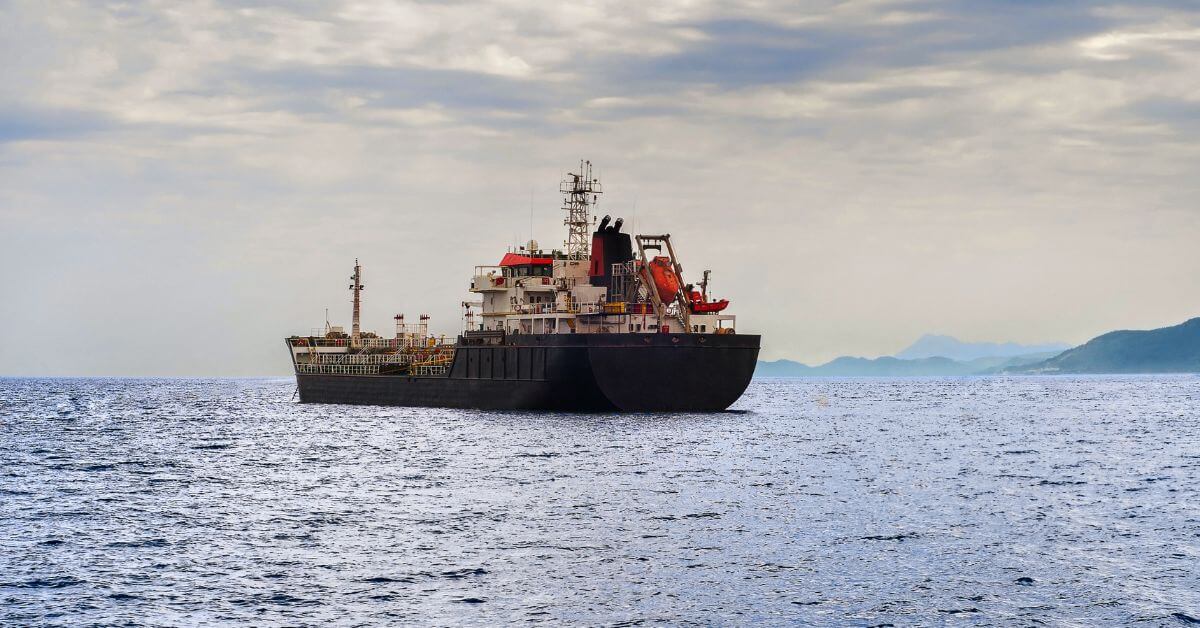
Dali Ship Owner Agrees To Pay $100 Million In Lawsuit Over Baltimore Bridge Collapse
October 25, 2024
USCG Cutter Returns Home With $115 Million Worth Of Seized Drugs After 38-day Mission In Caribbean
October 25, 2024

A dark-fleet oil tanker, Ceres I, recently involved in a collision in Southeast Asia, is en route to Zhoushan, China.
The tanker suspected of delivering sanctioned oil shows the operational traits of a dark fleet vessel, those known to transport cargoes like Iranian and Venezuelan oil despite U.S. sanctions, often using deceptive measures to avoid detection.
Ceres I collided with Hafnia Nile, a refined products carrier, near the Singapore Strait in July. The incident left both vessels on fire, though no casualties were reported, and environmental damage was contained.
After the collision, Ceres I turned off its transponder and travelled north, later being detained by Malaysian authorities. The Hafnia Nile was then towed to Singapore for repairs, as per its Singapore-based operator, Hafnia Ltd.
Both Malaysia and Singapore are investigating the cause and circumstances of the incident. Per reports, Ceres I returned to China for the first time since the collision.
The tanker has been mostly involved in ship-to-ship transfers off the Malaysian coast, evading port calls and frequently changing its flag registration. It currently uses the flag of São Tomé and Príncipe.
The vessel’s current owner, Hong Kong-based Ceres Shipping Limited, is difficult to reach due to the company’s lack of online presence and limited public information.
Shipping databases reveal that the vessel is also operated by a Singapore-based company. However, no representatives of the company were present when the registered address was visited after the incident.
Ceres I has gained much attention due to the high risk it poses to maritime insurers. The tanker’s capacity to transport up to 2 million barrels of crude oil poses environmental concerns that could lead to massive spills if the vessel experiences any further damage.
The vessel’s status as an aging Very Large Crude Carrier (VLCC) further increases the potential risks.
Before the July accident, Ceres I had made stops at Iran’s Kharg Island and Venezuela, raising suspicions due to its known association with U.S.-sanctioned cargo.
In response to the event, Hafnia Ltd. stated that it has yet to determine the ship’s actual ownership, manager, or insurer despite ongoing inquiries and data requests made to Malaysian authorities.
Hafnia’s CEO expressed dissatisfaction with regulatory limits that have allowed high-risk vessels to anchor unchecked in congested waterways across Southeast Asia.
Meanwhile, Ceres I will arrive at China’s Zhoushan port soon.
Reference: Bloomberg
Suspicious Shadow Fleet Tanker Damaged In Recent Collision En Route To China appeared first on Marine Insight – The Maritime Industry Guide
Source: Maritime Shipping News


